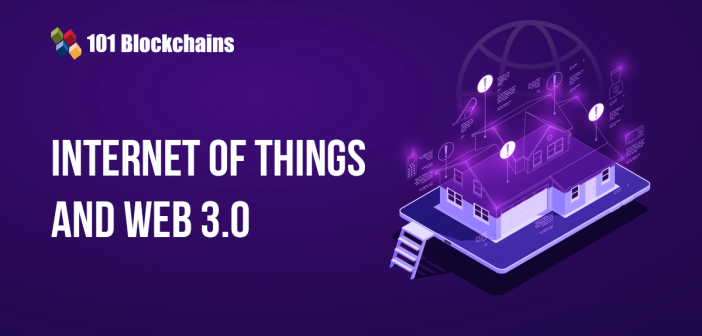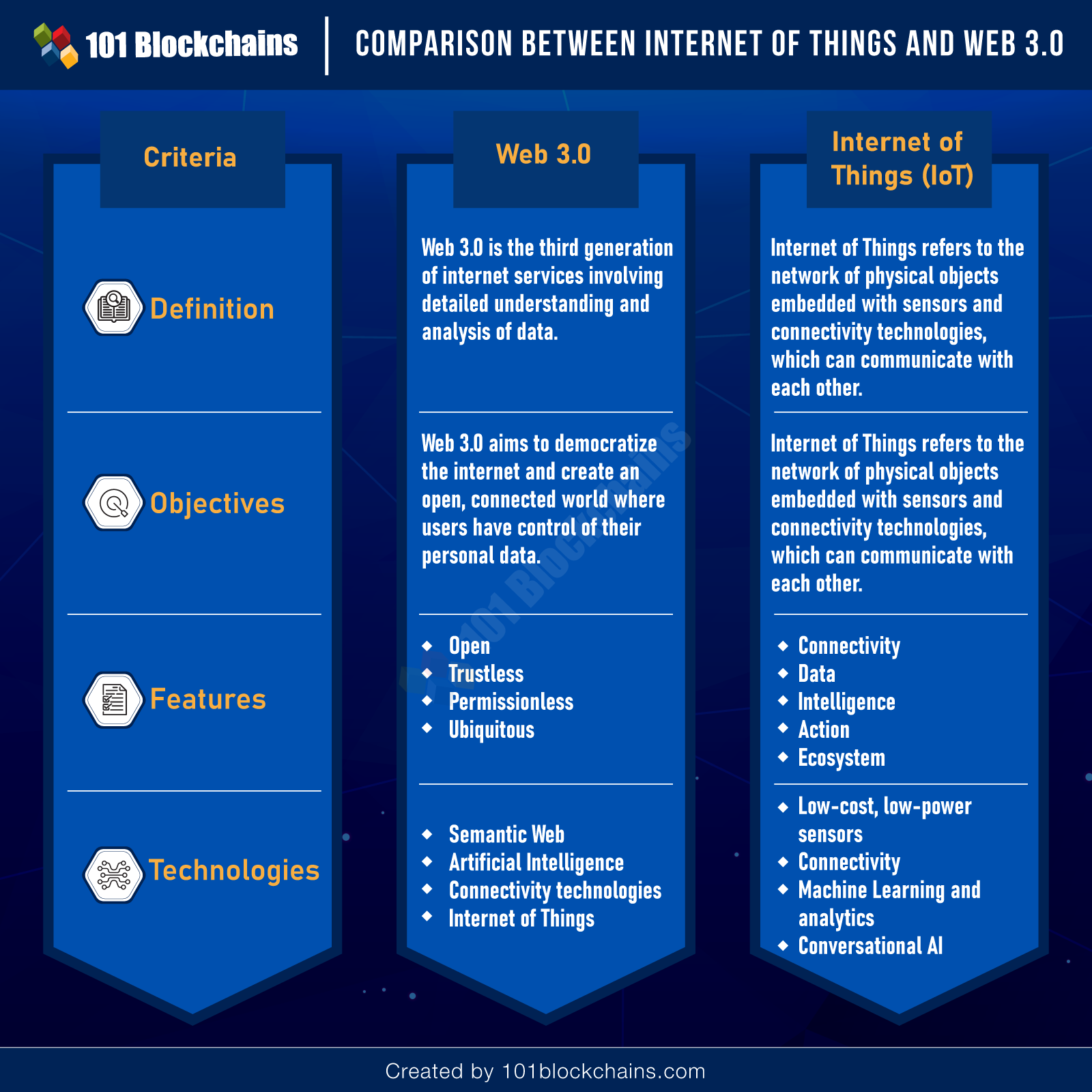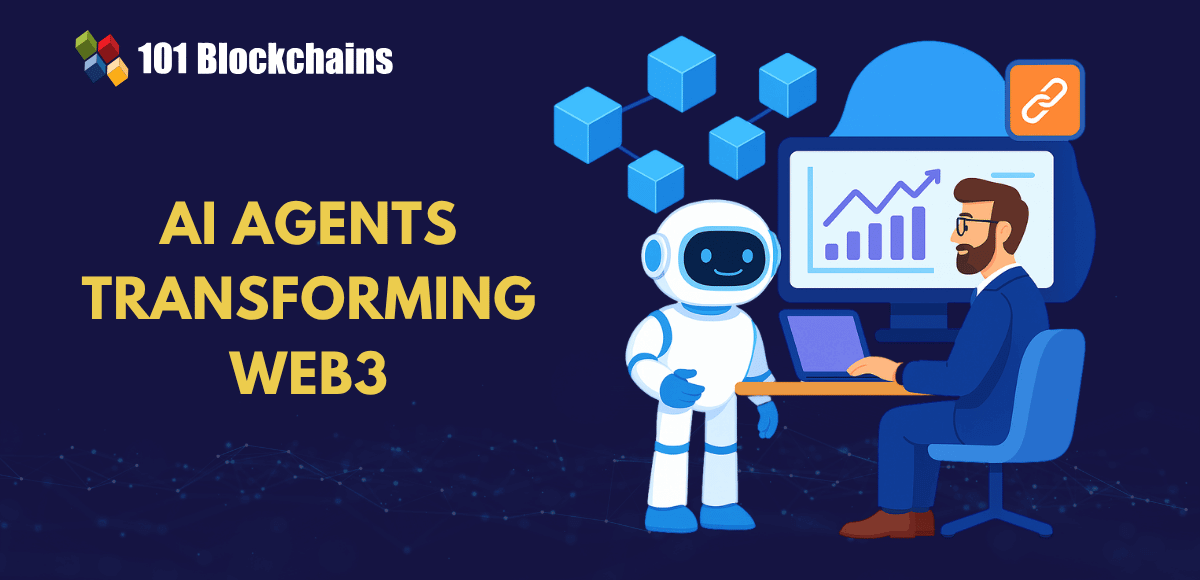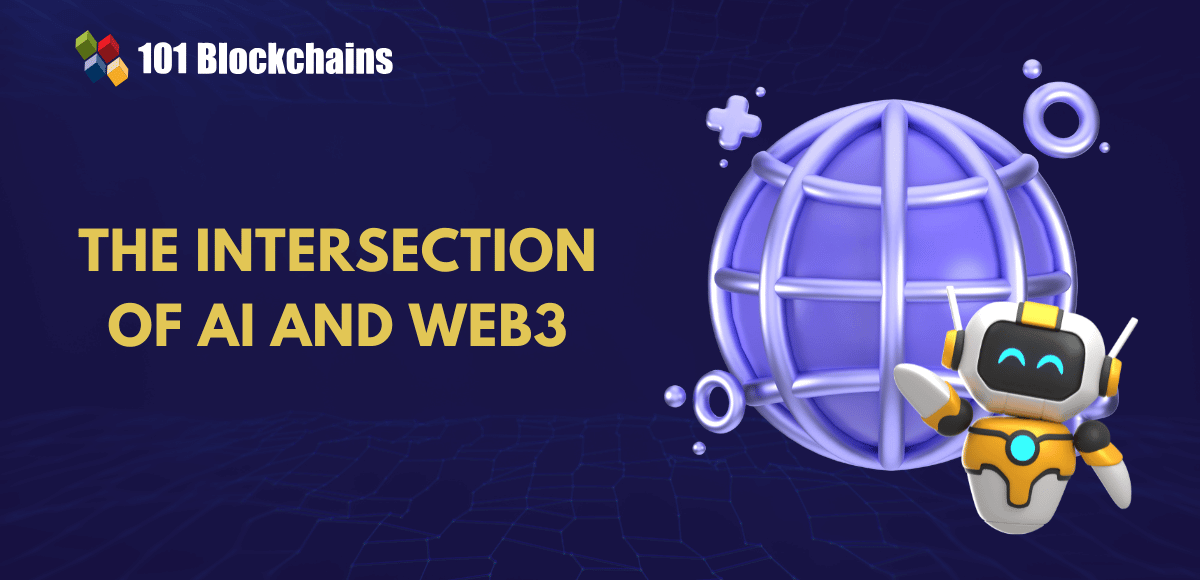Learn how blockchain truly works, master key definitions, and uncover what makes smart contracts so "smart." Dive into the fundamentals, gain valuable insights, and start your blockchain journey today!

- Web3
James Howell
- on February 25, 2022
Internet of Things and Web 3.0
The internet you use today is not exactly the same as it was in its initial days. First of all, there was the web 1.0 phase when the internet was all about websites with static web pages. The web pages generally served information and, in some cases, facilitated financial transactions. Subsequently, the next generation of the internet arrived somewhere around 2004, with the arrival of web 2.0.
Almost two decades later, the world is welcoming web 3.0 and many other disruptions such as blockchain, AI, and Internet of Things. Is Internet of Things and Web 3.0 completely different from each other? Or, do they complement each other? One of the common assumptions about IoT is that it is a web 3.0 technology and supports the expansion of new web 3.0 landscapes.
The arrival of new technology is obviously a crucial point of concern in an era of innovation and discovery. Many entrepreneurs are confused about web 3.0 & IoT and how to use them, just like many notable players experimenting with the technologies. Web 3.0 obviously offers an innovative playground for new applications along with the benefits of transparency, immutability, and efficiency. How will all these traits fit in the IoT ecosystem? Let us reflect on the relationship between IoT and web 3.0 in the following discussion by comparing them on the basis of different factors.
Why Did Web 3.0 Come in the First Place?
Prior to an overview of the differences between web 3.0 and IoT, it is important to identify the reasons for introducing web 3.0. The introduction of web 3.0 is a direct attribute of the challenges evident with the existing web. The internet was supposed to empower people with information along with the value of democratization. However, there are many prominent setbacks with the existing model followed for the internet. The notable challenges in the existing web are,
- Centralization is the foremost issue that can drive the expansion of new technologies like web 3.0 & IoT in future. The existing model of the web follows a centralized approach in which behavioral data of users is locked in silos. Big companies own your data and could sell them off to the highest bidder.
- Have you been bothered by an irrelevant ad while browsing through the internet? Well, the existing web definitely has little to show for privacy and security. Massive amounts of data captured in data centers are the easiest targets for cybercriminals.
- The emphasis on technology disruptions like Internet of Things and web 3.0 also emerges profoundly from the pressure on existing infrastructure of the web. As billions of connected devices generate larger data sets, the existing client-server model cannot scale up to the demand of next-generation web.
Web 3.0 could easily help in resolving these issues by ensuring the following interventions.
- The transition to web 3.0 would take away the oligopoly market dominated by social media giants.
- Introduction of web 3.0 & IoT platforms would also help in dissolving the boundaries between physical world and digital content.
- Most important of all, web 3.0 resolves the concerns of centralization and places ownership of personal data in the hands of users. At the same time, it can also facilitate data transfers with privacy in systems focused on security and confidentiality.
However, web 3.0 would need the support of relevant technologies for offering the core principles of openness and sharing. Internet of Things will be one of the crucial attributes in the development of the web 3.0 infrastructure.
Want to develop an in-depth understanding of web3 fundamentals? Enroll Now in Certified Web 3.0 Professional program
Differences between Web 3.0 and IoT

Please include attribution to 101blockchains.com with this graphic. <a href='https://101blockchains.com/blockchain-infographics/'> <img src='https://101blockchains.com/wp-content/uploads/2022/02/Comparison-between-Internet-of-Things-and-web-3.0.png' alt='Comparison between Internet of Things and web 3.0='0' /> </a>
The notion of comparing web 3.0 and IoT can be a bit confusing for many, considering the fact that IoT itself is a web 3.0 technology. However, a comparison between Internet of Things and Web 3.0 is important to understand how they fit together. Here is an outline of the differences between web 3.0 and IoT on the basis of different factors.
Definition
If you want to compare IoT and web 3.0, there could be no better place to start than the definitions. The definitions of two terms you are comparing can help you understand what they are and perceive the fundamental difference between them.
Web 3.0, in the broadest sense, is actually the third stage in evolution of the infrastructure of internet. The web 3.0 infrastructure would focus profoundly on developing a detailed understanding and analysis of data for creating a semantic web. Basically, web 3.0 focuses on creating an open, connected, and intelligent website with better user experiences.
The other player in the web 3.0 & IoT comparison, i.e., IoT, is basically a network of physical “things.” The “things” in the Internet of Things refer to physical objects embedded with sensors, software, and other technology integrations. IoT objects embedded with sensors can connect and exchange data with other connected devices and systems through the internet. The sheer range of IoT devices varies from common household objects to advanced industrial tooling. Estimates suggest that the total number of connected IoT devices will reach almost 22 billion by the year 2025.
Want to understand the fundamentals of the Internet of Things (IoT)? Enroll Now in IoT Fundamentals Course!
Watch This Video To Understand The Fundamentals of IoT
Objectives
You can also develop a solid comparison between Internet of Things and web 3.0 by reflecting on their objectives. What purpose do web 3.0 and IoT serve? The objective of web 3.0 focuses primarily on empowering users with an improved emphasis on security, privacy, and trust. As a matter of fact, the primary objective of web 3.0 rests in realizing the actual vision for the internet. It aims to democratize the internet and allow users to regain ownership and control over personal data.
The basic objective of Internet of Things is also another highlight for the web 3.0 & IoT comparisons. Internet of Things basically aims at creating a network of connected devices with embedded technologies that enable data identification and collection. However, the actual objective of IoT does not revolve around connection of IoT-enabled objects or the development of embedded technologies. On the contrary, IoT focuses on leveraging insights from data obtained by IoT-enabled devices for automation, digitization, and optimization of many digital transformation processes.
The role of IoT and web 3.0 in facilitating digital transformation is obviously the common element between them. Objectives of web 3.0 focus on democratization of the internet and allowing control of data to users. On the other hand, IoT focuses on using data for driving better decisions in digital transformation.
Features
The next pointer for drawing credible comparisons between Internet of Things and web 3.0 would draw the limelight towards features. A clear overview of the features of web 3.0 and IoT can offer a better impression of how they are related or different.
The features of web 3.0 imply that it is open, trustless, permissionless, and ubiquitous. Web 3.0 has been developed with open-source software and runs with the support of a massive, open community of developers. It is trustless as the network offers considerable flexibility for users to interact in public and private without any intermediaries bringing in risks.
Another important trait of web 3.0 refers to the fact that it is permissionless, and anyone could engage with web 3.0 without permission from centralized authorities. Most important of all, web 3.0 is completely ubiquitous, thereby implying that the internet will be available at all times. Users don’t have to depend on any devices such as computers and smartphones only for accessing the internet. The ubiquity of web 3.0 can enable internet access through many new intelligent gadgets based on IoT technology.
You can identify a glimpse of the relationship between web 3.0 & IoT in the ubiquity of web 3.0. The key features of IoT include connectivity, intelligence, data, objects, action, and an ecosystem. Connectivity between the IoT devices and hardware is an obvious highlight of IoT technologies alongside the things or objects associated with the IoT ecosystem.
The connected devices communicate data with each other, which can be used for analysis. Data is a crucial feature of IoT technology as it serves as the input for action and intelligence. Most important of all, the essential feature of intelligence in IoT focuses on the sensing capabilities of IoT devices and intelligence data collected from analytics. Furthermore, Internet of Things includes the features of action emerging as a consequence of intelligence and an IoT ecosystem.
Learn the fundamentals, challenges and use cases of Web3.0 blockchain from the E-book: AN INTRODUCTION TO WEB 3.0 BLOCKCHAIN
Technologies
Another prominent factor for understanding the relationship between Internet of Things and web 3.0 would point towards the underlying technologies. What are the technologies which are supporting developments in web 3.0 and IoT?
Web 3.0 relies prominently on a wide range of technologies such as the semantic web, AI and IoT. With the help of semantic web technology, web 3.0 could enable universal abstraction of information. Presentation of data in a semantic form is a practical indication for the next stage in evolution of the internet. Semantic web capitalizes on different web technologies for generating, sharing, and connecting content by means of search and analysis.
Interestingly, the understanding of information in web 3.0 with semantic web would focus more on the meaning of words rather than just numbers and keywords. Artificial intelligence is also one of the formidable technologies driving the web 3.0 trends, particularly for data detection. Web 3.0 leverages AI for ensuring proper differentiation between fake and reliable data.
Other crucial features of web 3.0 which offer distinction in comparisons between Internet of Things and web 3.0 are spatial computing, connectivity, and ubiquity. Spatial computing is an essential technology driving the web 3.0 trend as it can support the dissolution of boundaries between physical and virtual worlds. Web 3.0 also offers the advantage of decentralization to ensure accessibility and connectivity of data at all times. Continuing on the connectivity technologies powering web 3.0, it also requires the support of IoT for ubiquity to enable internet access from anywhere.
Where does IoT stand in the debate between web 3.0 & IoT in terms of the underlying technologies? First of all, you can notice many common highlights between IoT and web 3.0 in this case. For example, AI and connectivity are the two foremost similarities IoT has with web 3.0. IoT has been driven by access to low-cost sensor technology with the assurance of low power consumption.
Various network protocols for the internet enable seamless connection of sensors to the cloud and other IoT-enabled objects for effective data transfer. AI is a vital technology for IoT as it offers the functionalities of Natural Language Processing (NLP) in IoT devices. In addition, IoT also draws technological support from advancements in machine learning and analytics.
Want to familiarize yourself with the technology stack associated with IoT? Enroll Now in Internet Of Things (IoT) – Intermediate Level Course!
Conclusion
The final impression from an overview of web 3.0 & IoT shows how they are more related to each other than being different. One of the first things you need to notice about web 3.0 and Internet of Things is that they are not any specific technology. As a matter of fact, you can think of web 3.0 and IoT as philosophies for driving the next stages of digital transformation.
Web 3.0 aims at democratization of the internet by allowing users to regain control of their personal data. At the same time, IoT aims to connect almost everything around us to the internet, thereby dissolving the barrier between physical and virtual worlds. Learn more about both of them and how they affect the tech landscape in general.






